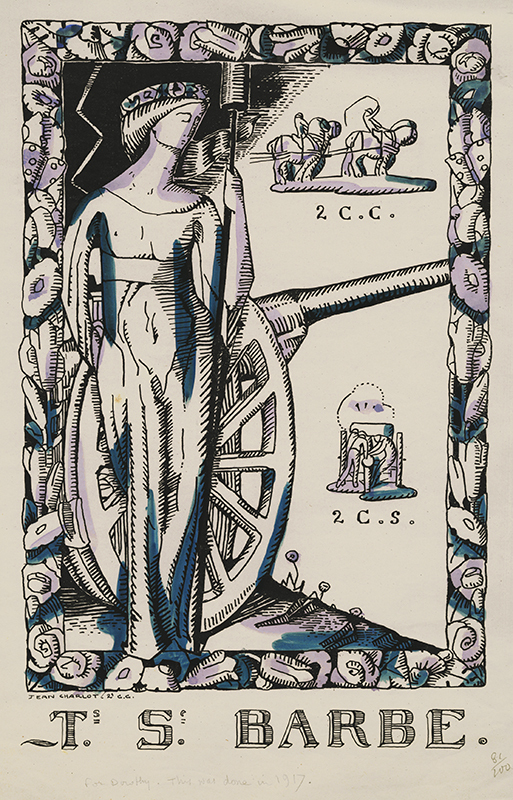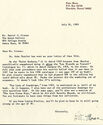
19th, 20th & 21st Century Fine Prints
707-546-7352 · fax 707-546-7924 · web: www.annexgalleries.com · email: artannex@aol.com
Sainte Barbe (Saint Barbara) by Jean Charlot



Sainte Barbe (Saint Barbara)
Jean Charlot
Sainte Barbe (Saint Barbara)
Jean Charlot
1898 - 1979 (biography)Charlot's eighth print, done in France. Ex-collection of his longtime friend, author Dorothy Rhoads; with a letter from Peter Morse regarding this print:
"Charlot noted: "I was in Orleans with the army before we were sent to the front. I wanted to make a multiple image for the men of our company. Technically I didn't know what I was doing. I went to a printer who handed me this mysterious paper and mysterious ink. He said he could reproduce a drawing made that way, by transfer. I never saw the stone. Then later I added color by hand, sort of a stencillike folk style..."
Though this impression is editioned 81/100 in an unidentified hand, Morse states in a letter: "[Charlot] also clearly remembered that he had planned 100 in the edition but could only afford about 20. Maybe the printer did the numbering out of sequence. It doesn't look like JC's writing."
Charlot also commented about this image: So we could say nearly at the same time––this is a little before actually; this is while I was in the army––another of those influences came into play, and that is the influence of what Frenchmen sum up as Images d’Épinal, that is, the penny-sheets, I think you say in English: those same penny-sheets that have centuries of tradition behind them, that were sold at pilgrimages and fairs, and so on. This was done also with a very deep intent. That is Saint Barbe. I don’t know if she’s Barbara in English, but she was the patron of artillery men in the old days when every craft had a holy patron. Saint Barbe was the patron of artillery men, and so I represented her in a pious image which I hoped my friends––I was in the artillery at the time with the 75 mm guns––my friends could put in their, well let’s say the trenches or wherever they were, and pray to. We needed a lot of prayer in those days, because death was very close by.
“2cc” at the top is canonnier conducteur; that is the boys who were on the horses. The only way of carrying our guns were horses at the time. “2cs” at the underneath is canonnier servant, who were serving the guns, and the “2” means that it was the lowest possible rank in the army. If you were very, very good, you became first canonnier conducteur or first canonnier servant. I think I stayed in number 2.
Saint Barbara, or Great Martyr Barbara, was a 3rd century Greek pagan who converted to Christianity and was beheaded by her father as punishment. She is best known as the patron saint of armourers, artillerymen, prisoners, and miners, among others.



